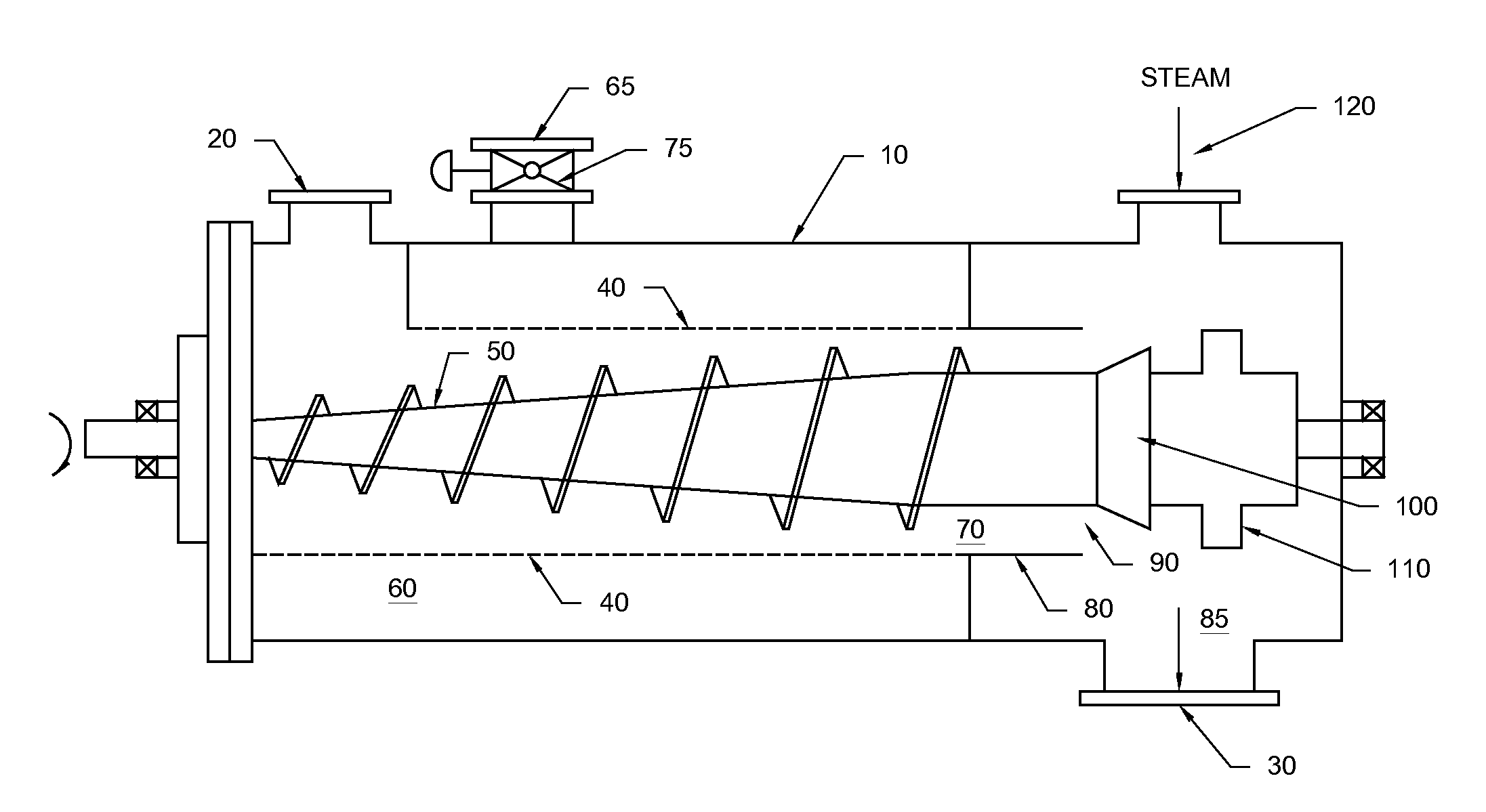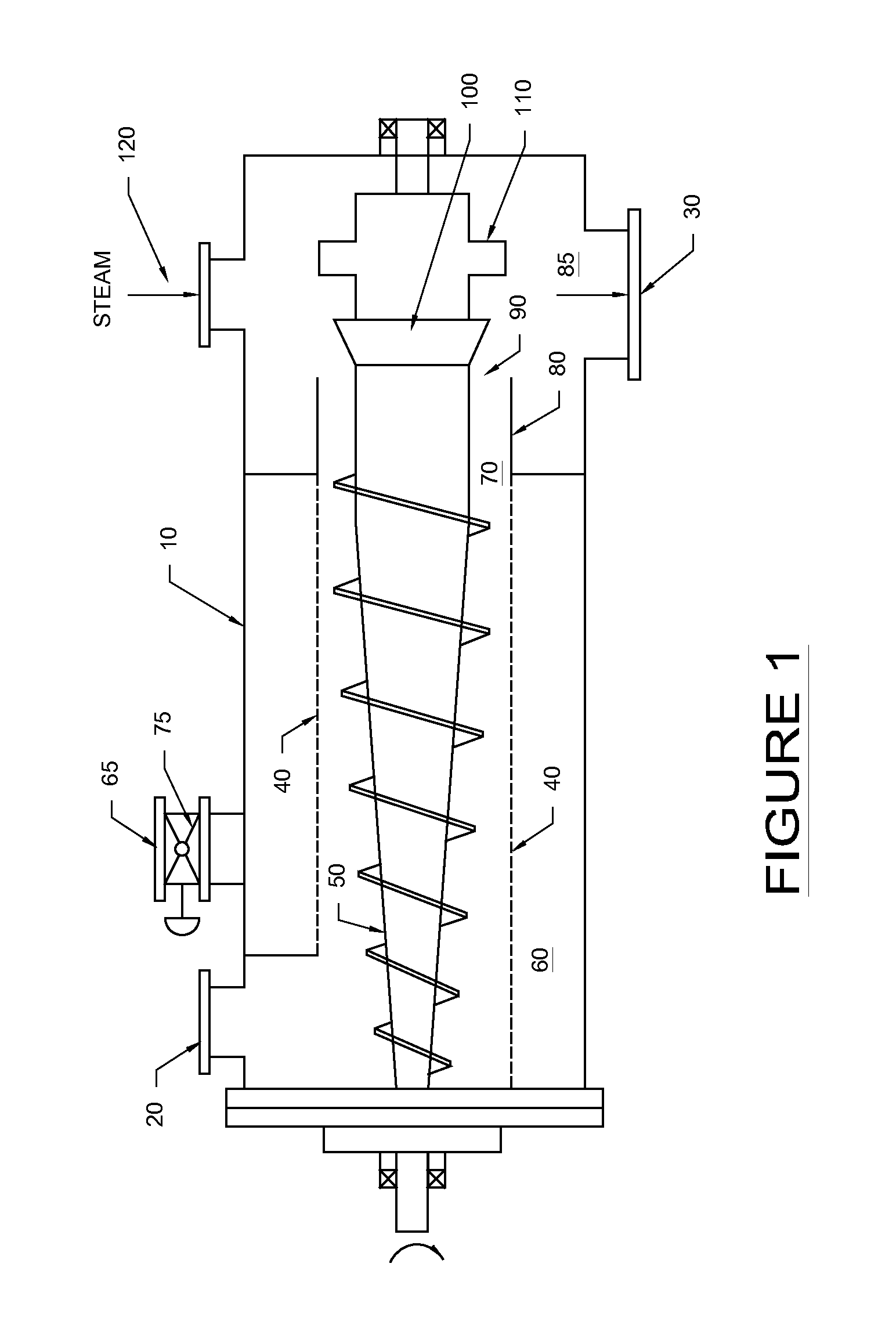Method for removing liquid from a slurry
a technology of liquid removal and slurry, which is applied in the direction of presses, manufacturing tools, separation processes, etc., can solve the problems of affecting the quality of the material, the material is too thin, and the wear of the press increases quickly, so as to reduce the risk of material damag
- Summary
- Abstract
- Description
- Claims
- Application Information
AI Technical Summary
Benefits of technology
Problems solved by technology
Method used
Image
Examples
Embodiment Construction
[0025]The following description is of a preferred embodiment by way of example only and without limitation to the combination of features necessary for carrying the invention into effect.
Slurry Preparation
[0026]The slurry from which liquid is removed in accordance with the invention may include organic material or materials derived from inorganic sources. Preferably, the slurry comprises organic material, which may be of plant and / or animal origin. The plant derived organic material may comprise polysaccharides, including cellulose and hemicellulose and starch, oligosaccharides, disaccharides, monosaccharides, or a combination thereof.
[0027]Preferably, the slurry is a lignocellulosic feedstock slurry. By the term “lignocellulosic feedstock”, it is meant any type of woody or non-woody plant biomass, or feedstock derived from plant biomass, such as, but not limited to, dedicated biomass crops such as, but not limited to grasses, for example, but not limited to, C4 grasses, such as swi...
PUM
 Login to View More
Login to View More Abstract
Description
Claims
Application Information
 Login to View More
Login to View More - R&D
- Intellectual Property
- Life Sciences
- Materials
- Tech Scout
- Unparalleled Data Quality
- Higher Quality Content
- 60% Fewer Hallucinations
Browse by: Latest US Patents, China's latest patents, Technical Efficacy Thesaurus, Application Domain, Technology Topic, Popular Technical Reports.
© 2025 PatSnap. All rights reserved.Legal|Privacy policy|Modern Slavery Act Transparency Statement|Sitemap|About US| Contact US: help@patsnap.com


